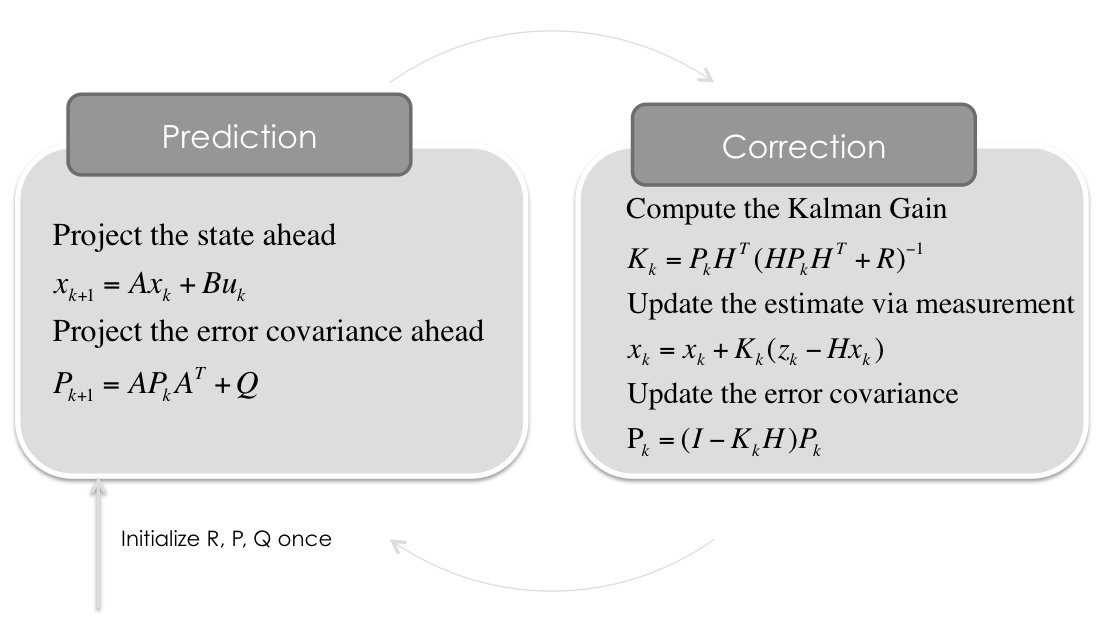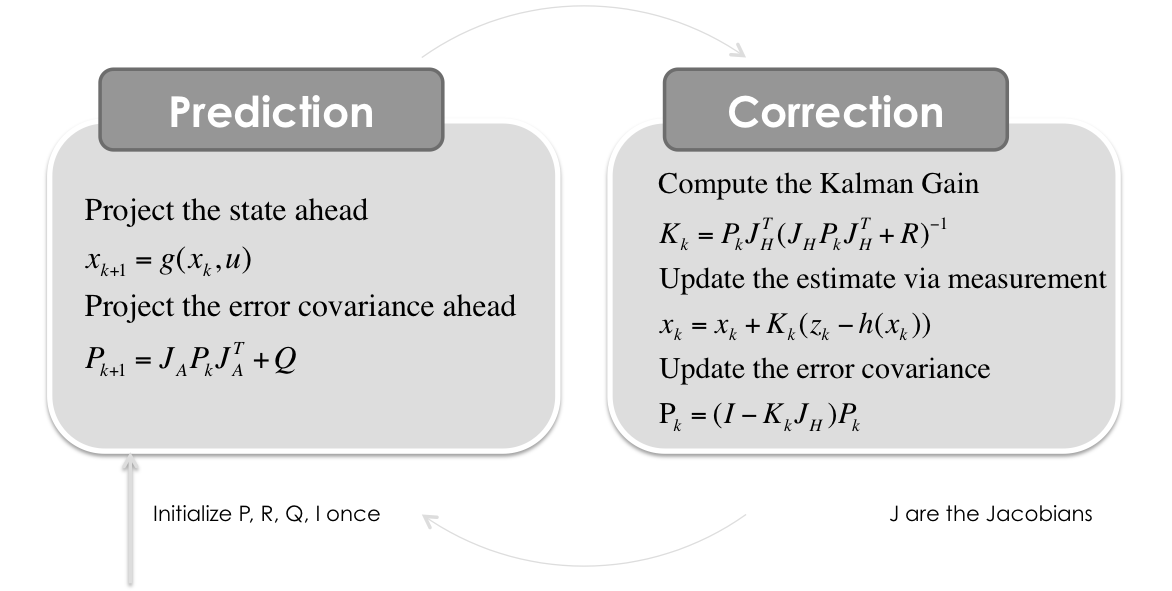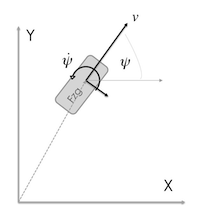####See Vimeo for some Explanations.
Situation covered: You drive with your car in a tunnel and the GPS signal is lost. Now the car has to determine, where it is in the tunnel. The only information it has, is the velocity in driving direction. The x and y component of the velocity (x˙ and y˙) can be calculated from the absolute velocity (revolutions of the wheels) and the heading of the vehicle (yaw rate sensor).
Situation covered: You have an acceleration sensor (in 2D: x¨ and y¨) and try to calculate velocity (x˙ and y˙) as well as position (x and y) of a person holding a smartphone in his/her hand.
Second example is the same dynamic model but this time you measure the position as well as the acceleration. Both values have to be fused together with the Kalman Filter. Situation covered: You have an acceleration sensor (in 2D: x¨ and y¨) and a Position Sensor (e.g. GPS) and try to calculate velocity (x˙ and y˙) as well as position (x and y) of a person holding a smartphone in his/her hand.
Third example is in 3D space, so the state vector is 9D. This model is for ball tracking or something else in 3D space.
Here the Measurement Covariance Matrix R is calculated dynamically via the maximum likelihood of the acutal standard deviation of the last measurements.
Situation covered: You have an velocity sensor which measures the vehicle speed (v) in heading direction (ψ) and a yaw rate sensor (ψ˙) which both have to fused with the position (x & y) from a GPS sensor.
Situation covered: You have an velocity sensor which measures the vehicle speed (v) in heading direction (ψ) and a yaw rate sensor (ψ˙) which both have to fused with the position (x & y) from a GPS sensor.
Because of poor GPS signal quality, the position measurement is pretty inaccurate. Especially, when the car is standing still, the position error is high. Therefore, an Adaptive Extended Kalman Filter is used here. It calculates the measurement noise covariance R in every filterstep depending on the speed and EPE (Estimated Position Error from GPS).
The trajectory is exportet to a .kmz, which can best viewed with Google Earth.
Adaptive Extended Kalman Filter with Constant Turn Rate and Velocity (CTRV) Model and Attitude Estimation
Roll and pitch are estimated as well.








